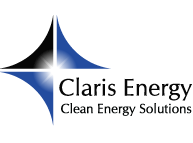 With the 179D Commercial Building Tax Deduction extended through 2015, it’s paramount for new and existing business owners to brush up on the nuts and bolts of how the tax credit works. Here are some of the basics that commercial businesses and contractors need to keep in mind when considering energy efficient upgrades to their buildings, or in contemplating new construction.
With the 179D Commercial Building Tax Deduction extended through 2015, it’s paramount for new and existing business owners to brush up on the nuts and bolts of how the tax credit works. Here are some of the basics that commercial businesses and contractors need to keep in mind when considering energy efficient upgrades to their buildings, or in contemplating new construction.
Eligible Structures
When planning new buildings or energy efficient upgrades to existing facilities, take note of which types of structures are actually eligible to receive tax incentives. There’s nothing more frustrating than infusing a large amount of capital on a project with the expectation of significant tax relief, only to find out after the fact that said relief isn’t going to be an option.
According to IRS guidelines, the following structures qualify for the 179D tax incentive:
- Buildings used primarily for commercial purposes
- Buildings used for industrial purposes (except industrial process systems)
- Multifamily residential buildings of four or more stories, including dormitory buildings
- Buildings that have been converted from other uses to primarily commercial use
- Unconditioned attached or detached garage spaces
These types of buildings, on the other hand, are not eligible for the 179D tax incentive:
- Single-family homes
- Multifamily buildings with three or fewer stories above grade
- Manufactured houses
- Buildings that do not use electricity or fossil fuels
- Religious buildings and organizations
Required Savings
Previously a building was required to demonstrate a combined energy savings of 50%, but a 2008 rule change amended these criteria. In order to receive the 179D tax credit today, an upgraded structure must yield 10% energy and power cost savings for envelope improvements, 20% for lighting improvements, and 20% for HVAC improvements.
Who Qualifies?
- In general, these are the parties that are eligible to clam the tax incentive:
- Building owners that own the improvement
- Building tenants that paid for and own the improvement
- Architects, contractors or engineers responsible for designing energy efficient government buildings
Time Period
Energy efficient upgrade projects that began in 2005 or later are eligible for the tax incentive.
Deduction Threshold
The maximum deduction for the 179D tax incentive is $1.80 per square foot.
Installation by Licensed Professionals
According to IRS Notice 2006-52, all work performed must be certified by a licensed contractor or engineer in the jurisdiction where the building is located. Certification documents may be prepared by a nonqualified person, but they must be reviewed and signed by a qualified individual. Additionally, the licensed profession cannot be related to the individual claiming the tax incentive.
Required Documentation
- A complete set of architectural drawings
- Energy compliance documents for lighting, envelope and HVAC
- EnergyPro computer file
- Primary contact information
These basics provide a good starting point for anyone looking to claim the 179d tax incentive. That said, it’s very important to periodically review these requirements before beginning a new project, because they are always subject to change.
Steve Nanos
Latest posts by Steve Nanos (see all)
- LED Lighting – A Great EPAct 179D Qualification Possibility - February 3, 2015
- 45L Credit Requirements for Begun Constructions - January 29, 2015
- Can Section 179D Incentives Help Businesses Save a Lot of Money? - January 27, 2015

 609.275.8484
609.275.8484